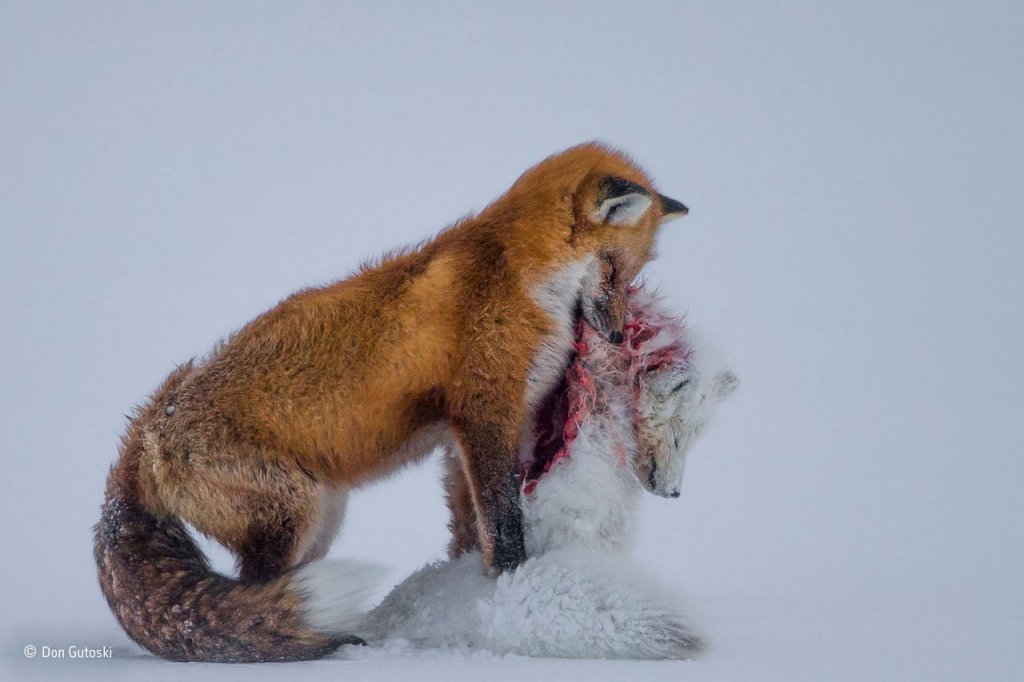The Natural History Museum’s annual quest to identify the best wildlife photographer of the year has concluded and the winners have been announced. From the rare occurrence to the up close and personal, these photographers captured remarkable images from all over the world that will have you seeing wildlife in new and extraordinary ways.
They endured harsh conditions underwater and freezing. They pushed the limits of their equipment to the limits, all in the name of getting a great shot. As we’ve detailed before, photographer can be a lot like hunting in that it takes patience and stealth to get close enough to animals, which by their nature are extremely timid.
Along with the awards, the Natural History Museum hosts a travelling exhibit of the best wildlife photographs, which is currently in Great Britain. To learn more about the show heading to more than 60 cities around the world, click here.
Photo credit: Natural History Museum
Wildlife Photos of the Year
-
A tale of two foxes
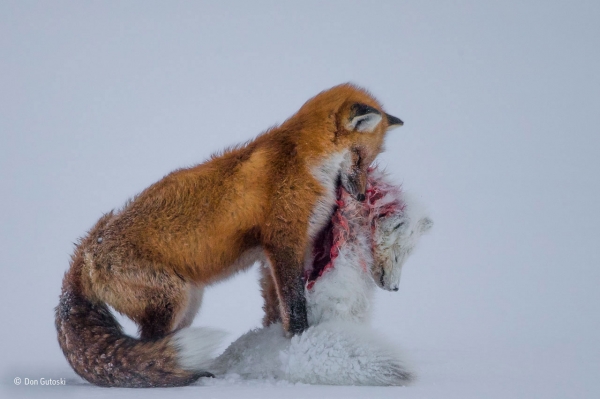
Winner of the wildlife photographer of the year was Canadian Don Gutoski for this photo of a red fox hunting an arctic fox. Even more rare than the behavior is actually getting it on camera, let alone -22 degree weather.
Though the light was poor, the snow-covered tundra provided the backdrop for the moment that the red fox paused with the smaller fox in its mouth in a grim pose.
Photo credit: Don Gutoski/Natural History Museum
-
Ruffs on display
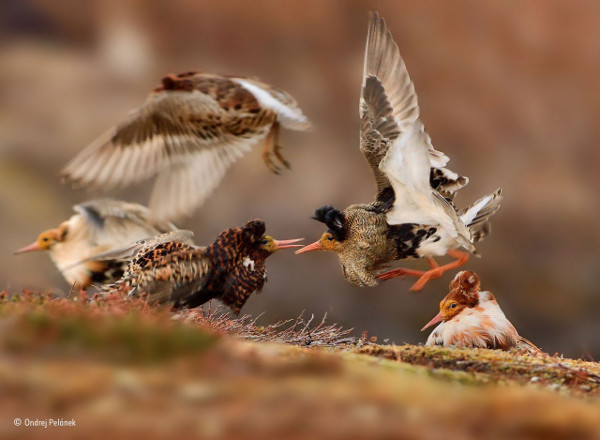
Winning young wildlife photographer of the year was Ondrej Pelanek from the Czech Republic with this photo of territorial male ruffs in full breeding plumage. The birds show off their ruffs proclaiming ownership of their courtship areas and Pelanek's photo captures them in all their glory.
Photo credit: Ondrej Pelanek/Natural History Museum
-
Flight of the scarlet ibis
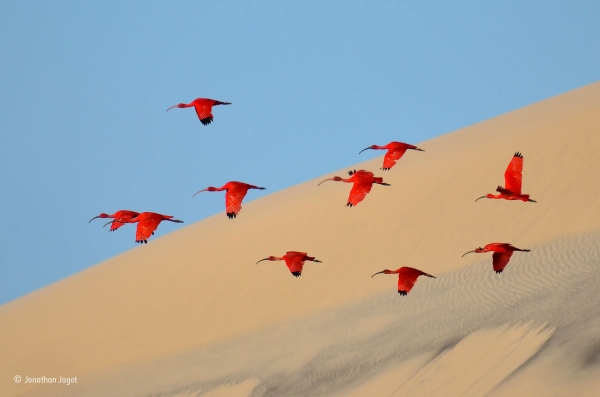
Winner of the young wildlife photographer in the 15-17 year-old age bracket was Jonathan Jagot from France. Jonathan has been sailing round the world with his family for five years, and for the past three years he has been taking wildlife photographs. It was when they anchored off the island of Lençóis on the coast of northeast Brazil that he saw his first scarlet ibis – the most beautiful birds he had ever seen.
Photo credit: Jonathan Jagot/Natural History Museum
-
The company of three
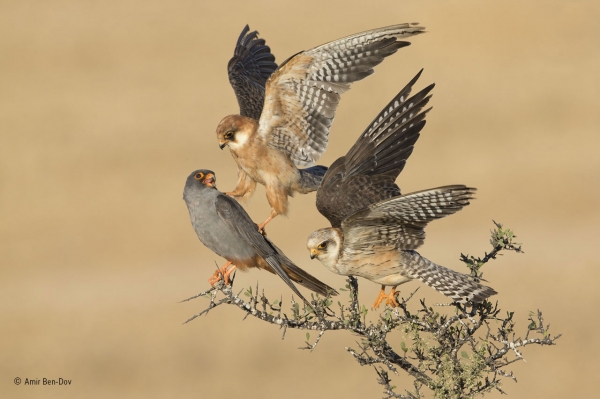
Winner in the birds category was Israeli Amir Ben-Dov with this photo of red-footed falcons. These birds migrate in large flocks from central and eastern Europe to southern and southwestern Africa. Amir spent six days watching them on agricultural land near Beit Shemesh, Israel, where their flock was resting on autumn migration, refuelling on insects.
Photo credit: Amir Ben-Dov/Natural History Museum
-
Still life
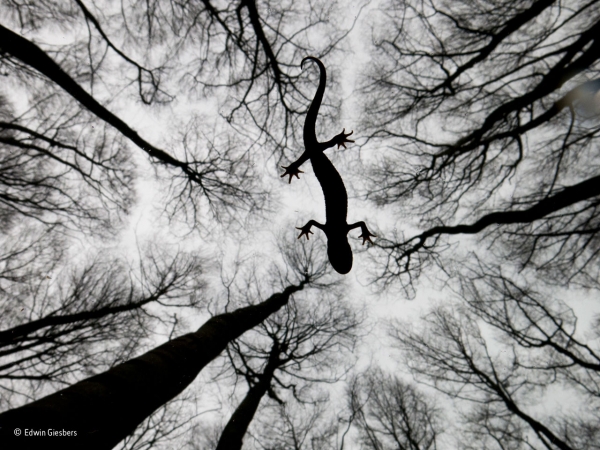
In the category of amphibians and reptiles, Ewin Giesbers from the The Netherlands took top honors for this photo of a newt hanging motionless near the surface of a stream. Also motionless in the water, in Gelderland in the Netherlands, was Edwin in a wetsuit shooting from underneath. He had very slowly moved his compact camera right under the newt.
Photo credit: Edwin Giesbers/Natural History Museum
-
A whale of a mouthful

Michael AW captured this photo of a bryde's whale up close to win the under water photography award. A bryde’s whale rips through a swirling ball of sardines, gulping a huge mouthful in a single pass.
Photo credit: Michael AW/Natural History Museum
-
The art of algae
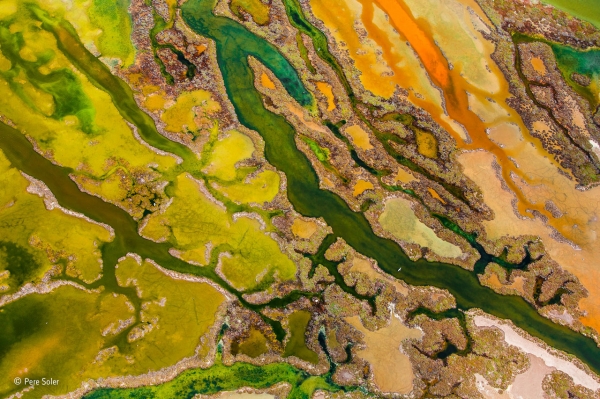
Pere Soler took this shot of The Bahia de Cadiz Natural Park on the cost of Andalucia, Spain from the air to win best photo from the sky. The mosaic of marshes, reedbeds, sand dunes and beaches attract great numbers of birds. The colorful tide waters are formed once a year as temperatures warm and the salinity changes in the intertidal wetlands.
Photo credit: Pere Soler/Natural History Museum
-
Shadow Walker
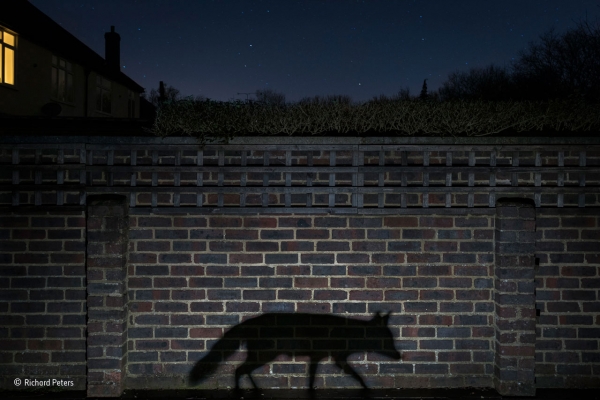
Richard Peters snatched this glimpse of an urban fox in Surrey, England. In this shot, the fox walked through the beam of a torch he had set up, casting its profile on the side of his shed. Peters used a ground-level flash for a dfined shadow, a long exposure for the stars on a moonless night.
Photo credit: Richard Peters/Natural History Museum
-
Life comes to art

Every year, a pair of barn swallows nests in the rafters of an old storehouse on Juan’s farm in Almeria, southern Spain, entering the building through a broken windowpane. Equipment and tools are kept in the building, but the swallows seem unperturbed by people coming in and out. Last spring, Juan Tapia captured this image of the swallows.
Photo credit: Juan Tapia/Natural History Museum
-
Broken Cats
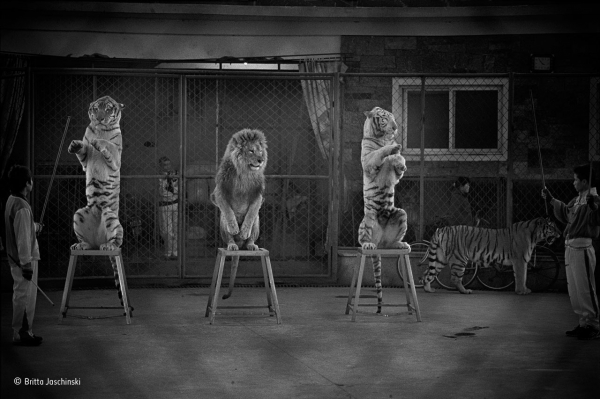
Britta Jaschinski snapped this shot of big cats performing at the Seven Star Park in Guilin, China. The animals have had their teeth and claws pulled out, and when not in the arena, they live in the tiny cages visible behind the stage. For the past 20 years, Britta has travelled extensively, documenting the world of animals in captivity and their unnecessary suffering in the name of education and entertainment.
Photo credit: Britta Jaschinski
